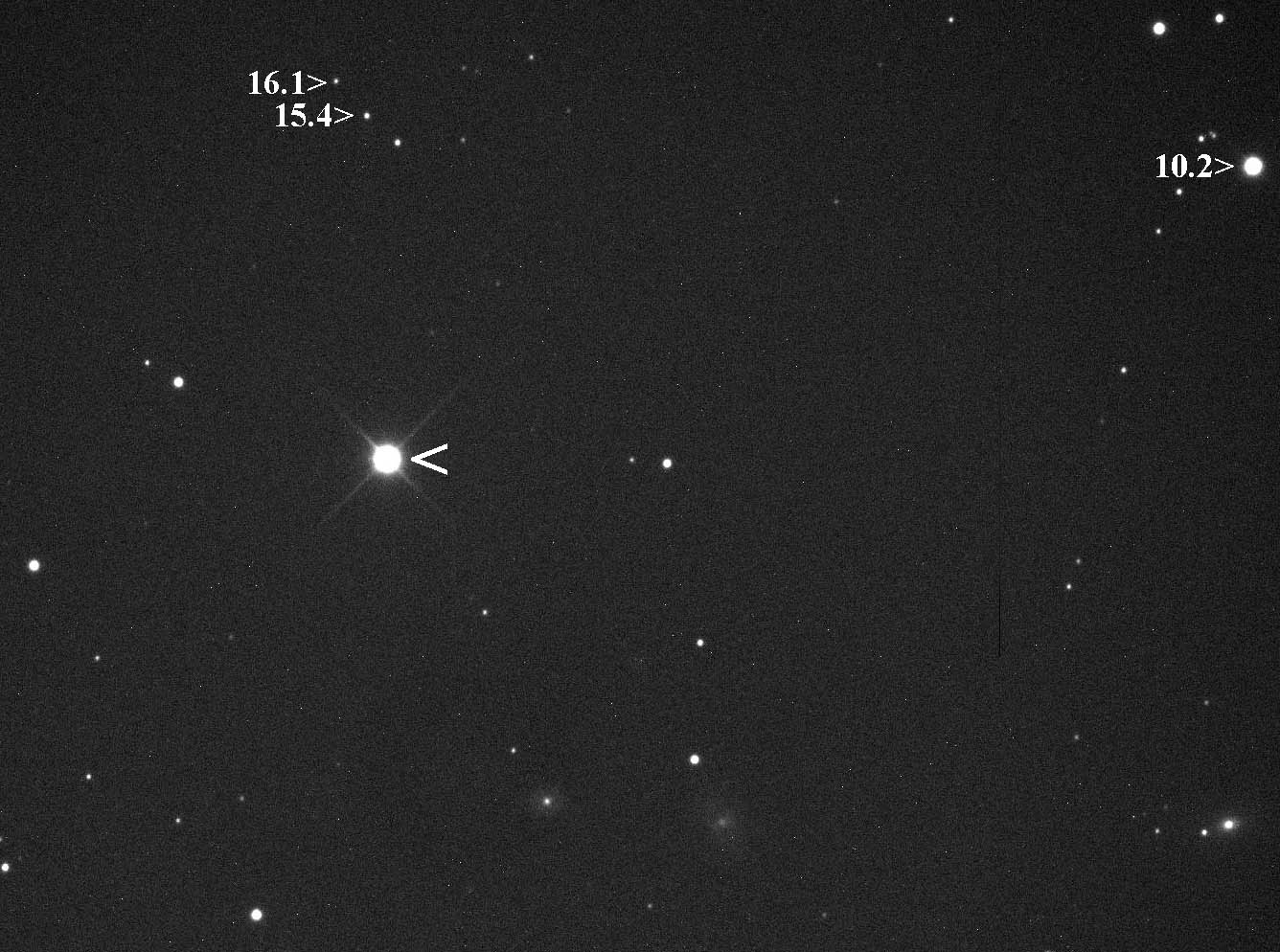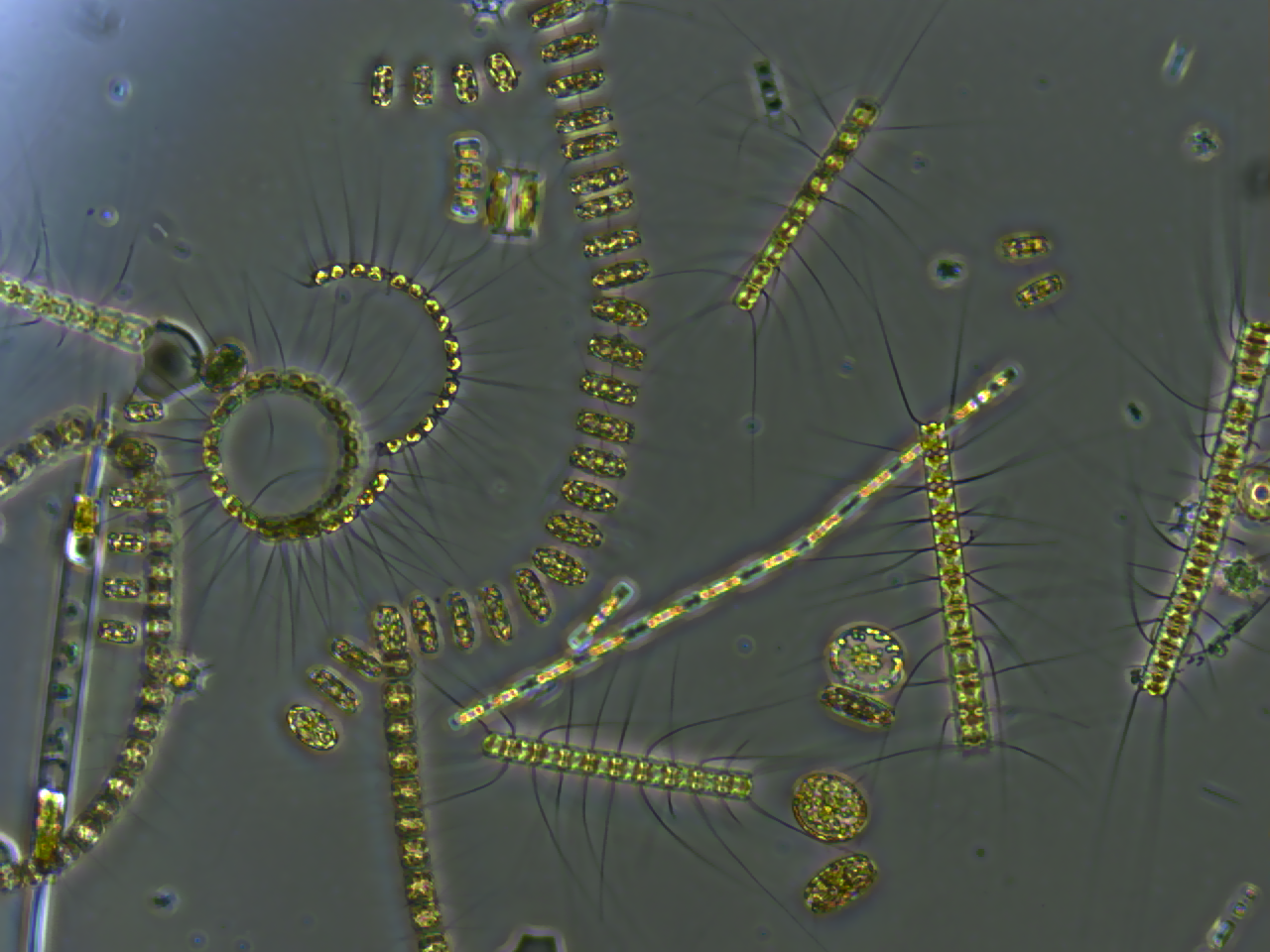|
Clarice Yentsch
Clarice Morel Yentsch is a scientist, author, education and museum professional, and community benefactor. As a scientist, she pioneered the use of flow cytometry to investigate marine phytoplankton and co-founded Bigelow Laboratory for Ocean Sciences. Education and career Yentsch has a B.S. Natural Sciences (1964) and M.Sc. Science Education Biology (1965) from the University of Wisconsin. In the period between 1967 and 1968, she also taught biology at the Junior College of Broward County which is now called Broward College. She obtained her Ph.D. from Nova Southeastern University where she was one of 21 students in Nova Southeastern's first class four of whom were women. Yentsch describes the beginning of Nova Southeastern's oceanography program and their one-to-one ratio of Ph.D. students to professors in a 2014 video filmed during a celebration of the founding of Bigelow Laboratory for Ocean Sciences. The program from the May 17, 1970 commencement lists her Ph.D. research pr ... [...More Info...] [...Related Items...] OR: [Wikipedia] [Google] [Baidu] |
Flow Cytometry
Flow cytometry (FC) is a technique used to detect and measure physical and chemical characteristics of a population of cells or particles. In this process, a sample containing cells or particles is suspended in a fluid and injected into the flow cytometer instrument. The sample is focused to ideally flow one cell at a time through a laser beam, where the light scattered is characteristic to the cells and their components. Cells are often labeled with fluorescent markers so light is absorbed and then emitted in a band of wavelengths. Tens of thousands of cells can be quickly examined and the data gathered are processed by a computer. Flow cytometry is routinely used in basic research, clinical practice, and clinical trials. Uses for flow cytometry include: * Cell counting * Cell sorting * Determining cell characteristics and function * Detecting microorganisms * Biomarker detection * Protein engineering detection * Diagnosis of health disorders such as blood cancers * Measur ... [...More Info...] [...Related Items...] OR: [Wikipedia] [Google] [Baidu] |
National Institutes Of Health
The National Institutes of Health, commonly referred to as NIH (with each letter pronounced individually), is the primary agency of the United States government The federal government of the United States (U.S. federal government or U.S. government) is the national government of the United States, a federal republic located primarily in North America, composed of 50 states, a city within a fede ... responsible for biomedical and public health research. It was founded in the late 1880s and is now part of the United States Department of Health and Human Services. The majority of NIH facilities are located in Bethesda, Maryland, and other nearby suburbs of the Washington metropolitan area, with other primary facilities in the Research Triangle Park in North Carolina and smaller satellite facilities located around the United States. The NIH conducts its own scientific research through the NIH Intramural Research Program (IRP) and provides major biomedical research fundin ... [...More Info...] [...Related Items...] OR: [Wikipedia] [Google] [Baidu] |
Broward College Faculty
Broward may refer to: *Broward County, Florida *Napoleon B. Broward (1857–1910), Florida governor after which the county is named *Robert C. Broward Robert C. Broward (March 30, 1926 – June 28, 2015) was an architect and author based in Jacksonville, Florida. He had a 61-year professional career during which he designed more than 500 projects. He was an adjunct Professor of Design at the Un ... (1926–2015), American architect and author See also * * * {{disambiguation, surname ... [...More Info...] [...Related Items...] OR: [Wikipedia] [Google] [Baidu] |
University Of Wisconsin–Madison Alumni
A university () is an institution of higher (or tertiary) education and research which awards academic degrees in several academic disciplines. ''University'' is derived from the Latin phrase ''universitas magistrorum et scholarium'', which roughly means "community of teachers and scholars". Universities typically offer both undergraduate and postgraduate programs. The first universities in Europe were established by Catholic Church monks. The University of Bologna (), Italy, which was founded in 1088, is the first university in the sense of: *being a high degree-awarding institute. *using the word ''universitas'' (which was coined at its foundation). *having independence from the ecclesiastic schools and issuing secular as well as non-secular degrees (with teaching conducted by both clergy and non-clergy): grammar, rhetoric, logic, theology, canon law, notarial law.Hunt Janin: "The university in medieval life, 1179–1499", McFarland, 2008, , p. 55f.de Ridder-Symoens, Hild ... [...More Info...] [...Related Items...] OR: [Wikipedia] [Google] [Baidu] |
Nova Southeastern University Alumni
A nova (plural novae or novas) is a transient astronomical event that causes the sudden appearance of a bright, apparently "new" star (hence the name "nova", which is Latin for "new") that slowly fades over weeks or months. Causes of the dramatic appearance of a nova vary, depending on the circumstances of the two progenitor stars. All observed novae involve white dwarfs in close binary systems. The main sub-classes of novae are classical novae, recurrent novae (RNe), and dwarf novae. They are all considered to be cataclysmic variable stars. Classical nova eruptions are the most common type. They are likely created in a close binary star system consisting of a white dwarf and either a main sequence, subgiant, or red giant star. When the orbital period falls in the range of several days to one day, the white dwarf is close enough to its companion star to start drawing accreted matter onto the surface of the white dwarf, which creates a dense but shallow atmosphere. This atmosphe ... [...More Info...] [...Related Items...] OR: [Wikipedia] [Google] [Baidu] |
Women Biologists
A woman is an adult female human. Prior to adulthood, a female human is referred to as a girl (a female child or adolescent). The plural ''women'' is sometimes used in certain phrases such as "women's rights" to denote female humans regardless of age. Typically, women inherit a pair of X chromosomes, one from each parent, and are capable of pregnancy and giving birth from puberty until menopause. More generally, sex differentiation of the female fetus is governed by the lack of a present, or functioning, SRY-gene on either one of the respective sex chromosomes. Female anatomy is distinguished from male anatomy by the female reproductive system, which includes the ovaries, fallopian tubes, uterus, vagina, and vulva. A fully developed woman generally has a wider pelvis, broader hips, and larger breasts than an adult man. Women have significantly less facial and other body hair, have a higher body fat composition, and are on average shorter and less muscular than men. T ... [...More Info...] [...Related Items...] OR: [Wikipedia] [Google] [Baidu] |
David Schindler
David William Schindler, , (August 3, 1940 – March 4, 2021) was an American/Canadian limnologist. He held the Killam Memorial Chair and was Professor of Ecology in the Department of Biological Sciences at the University of Alberta in Edmonton, Alberta. He was notable for "innovative large-scale experiments" on whole lakes at the Experimental Lakes Area (ELA) which proved that "phosphorus controls the eutrophication (excessive algal blooms) in temperate lakes leading to the banning of phosphates in detergents. He was also known for his research on acid rain. In 1989, Schindler moved from the ELA to continue his research at the University of Alberta in Edmonton, with studies into fresh water shortages and the effects of climate disruption on Canada's alpine and northern boreal ecosystems. Schindler's research had earned him numerous national and international awards, including the Gerhard Herzberg Gold Medal, the First Stockholm Water Prize (1991) the Volvo Environment Prize ... [...More Info...] [...Related Items...] OR: [Wikipedia] [Google] [Baidu] |
Association For The Sciences Of Limnology And Oceanography
The Association for the Sciences of Limnology and Oceanography (ASLO), formerly known as the Limnological Society of America and the American Society of Limnology and Oceanography, is a scientific society established in 1936 with the goal of advancing the sciences of limnology and oceanography. With approximately 4,000 members in nearly 60 different countries, ASLO is the largest scientific society, worldwide, devoted to either limnology or oceanography or both. Journal publications ASLO publishes four scientific journals: * '' Limnology and Oceanography'' * ''Limnology and Oceanography Letters'' * '' Limnology and Oceanography: Methods'' * ''Limnology and Oceanography Bulletin'' ''Limnology and Oceanography: Fluids and Environments'' Much of the content of ASLO journals is open access. In addition to occasional small workshops ASLO hosts regularly scheduled major scientific meetings around the world including the Aquatic Science Meetings, the Ocean Science Meetings, and the ... [...More Info...] [...Related Items...] OR: [Wikipedia] [Google] [Baidu] |
Sarah Fraser Robbins
Sarah Fraser Robbins (December 27, 1911 – February 9, 2002) was an American writer and educator in the field of natural history and a dedicated environmentalist. Her scientific specialty was the creatures that inhabit the shallow waters of the seacoast of Massachusetts. She was a fervent birder as well. She was the first director of education at the Peabody Museum of Salem, 1971–1981. She spent many years before and after that time exploring the dwellers of the waters, littoral zone, and sky near her house in Gloucester, Massachusetts. For almost twenty years she served on the board of directors of the Massachusetts Audubon Society and contributed regular columns to the Society's magazines. She was also a member of the Society of Woman Geographers, an elite group of adventurers and travelers. She rode elephants to see tigers in India, flew over the Alps in a hot-air balloon, and fished in Afghanistan. Early life, education, and marriage Sarah Fraser was the youngest of five ... [...More Info...] [...Related Items...] OR: [Wikipedia] [Google] [Baidu] |
Phytoplankton
Phytoplankton () are the autotrophic (self-feeding) components of the plankton community and a key part of ocean and freshwater ecosystems. The name comes from the Greek words (), meaning 'plant', and (), meaning 'wanderer' or 'drifter'. Phytoplankton obtain their energy through photosynthesis, as do trees and other plants on land. This means phytoplankton must have light from the sun, so they live in the well-lit surface layers ( euphotic zone) of oceans and lakes. In comparison with terrestrial plants, phytoplankton are distributed over a larger surface area, are exposed to less seasonal variation and have markedly faster turnover rates than trees (days versus decades). As a result, phytoplankton respond rapidly on a global scale to climate variations. Phytoplankton form the base of marine and freshwater food webs and are key players in the global carbon cycle. They account for about half of global photosynthetic activity and at least half of the oxygen production, despi ... [...More Info...] [...Related Items...] OR: [Wikipedia] [Google] [Baidu] |
Bermuda Atlantic Time-series Study
The Bermuda Atlantic Time-series Study (BATS) is a long-term oceanographic study by the Bermuda Institute of Ocean Sciences (BIOS). Based on regular (monthly or better) research cruises, it samples an area of the western Atlantic Ocean nominally at the coordinates . The cruise programme routinely samples physical properties such as ocean temperature and salinity, but focuses on variables of biological or biogeochemical interest including: nutrients (nitrate, nitrite, phosphate and silicic acid), dissolved inorganic carbon, oxygen, HPLC of pigments, primary production and sediment trap flux. The BATS cruises began in 1988 but are supplemented by biweekly Hydrostation "S" cruises to a neighbouring location () that began in 1954. The data collected by these cruises are available online. Scientific Findings Between 1998 and 2013, research conducted at BATS has generated over 450 peer-reviewed articles. Among the findings are measurements showing the gradual acidification of th ... [...More Info...] [...Related Items...] OR: [Wikipedia] [Google] [Baidu] |


.jpg)

